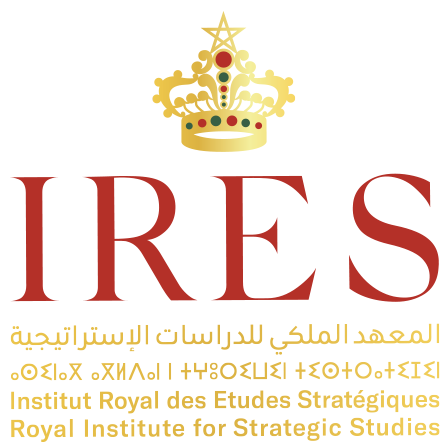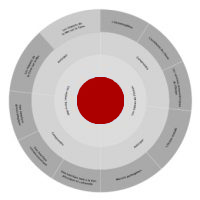ANNUAL SURVEY PAPER 2023
BIORESISTANCE
- 09/10/2023
Bioresistance*The ability of a living organism to rebuild its natural immune defenses after antibiotic treatment. This notion can be broadened to other types of treatment, not necessarily for humans (antivirals, pesticides, insecticides, …).
Source: La langue française.
https://www.lalanguefrancaise.com/dictionnaire/definition/bioresistance/ encompasses the resistance of specific harmful bacteria, viruses and pests to antibiotics, pesticides, antiviral treatments, and genetically modified organisms.
While not new, this phenomenon has become increasingly alarming over the years. First, because the proportion of resistant organisms is on the rise, and this resistance stems from an increasingly swift natural selection process: there is no turning back. Second, because it reduces human’s ability to act on nature. The WHO identifies antibiotic resistance as one of the greatest threats to global health, food security, and development.
Morocco is concerned enough by this emergence that an Antimicrobial Resistance Strategic Plan (24-09-2019) was set up as part of Health Plan 2025. Still, engaging all partners, including the private sector, to establish specific regulatory frameworks and take practical action on bioresistance, remains a decisive milestone.
BIODIVERSITY DEGRADATION
- 09/10/2023
Biodiversity degradation*The diversity of life present on planet Earth, in all its manifestations. It encompasses not only the number of species, but also genetic variations within each species and dynamic interactions between these life forms within complex ecosystems.
Source: European Parliament. “Perte de la biodiversité : quelles en sont les causes et les conséquences ?”. June 2021.
https://www.europarl.europa.eu/news/fr/ headlines/society/20200109STO69929/perte-de-la-biodiversite-quelles-en-sont-les-causes-et-les-consequences/ has to do with the decline or loss of biological variability within an ecosystem, including fewer species, smaller populations, and reduced genetic diversity, often due to anthropogenic factors such as land-use conversion, pollution, overexploitation of plants and animals, and climate change.
The 2019 Intergovernmental Science-Policy Platform Assessment of Biodiversity and Ecosystem Services highlighted that biodiversity degradation is accelerating at a rate unprecedented in human history (one million species face extinction). The “Living Planet 2022” global index shows an average decrease of 69% in the population of wild species observed between 1970 and 2018.
Morocco’s biodiversity is the richest in the Mediterranean, after that of the Anatolian region (Turkey), with an overall endemism rate of 11% for fauna and 25% for vascular plants. Morocco is the world’s 12th largest exporter of medicinal and aromatic plants, with 52,000 metric tons of plants and 5,000 metric tons of essential oils (1.2 billion Moroccan dirhams).
Particularly vulnerable to deforestation, pollution, overexploitation of resources, and climate change, the Kingdom has adopted measures to preserve, restore, and manage ecosystems, such as the 2016-2020 National Biodiversity Strategy and Action Plan. Nonetheless, Morocco now needs to step up implementation of these measures if it is to outpace biodiversity degradation.
RISING SEA LEVELS*
- 09/10/2023
Gradually rising sea levels are driven by seawater heat expansion and ground ice melt, and significantly impact coastal areas (erosion, flooding, disruption of coastal ecosystems, and human displacement).
The effects of rising sea levels, a threat to over one billion people by 2050, are set to escalate, and the prevalence of extreme events is set to grow, according to the IPCC 2022. Low-lying, unprotected coastal areas face the greatest risk.
Morocco is directly exposed to rising sea levels, owing to the shallow topography, urban concentration, and ecological, economic, and touristic value of its coasts. It is therefore essential to develop the means to monitor these zones and anticipate future impacts (population relocation, coastal protection systems, …).
FOOD WASTE*
- 09/10/2023
FAO defines food waste as a deterioration in the quantity or quality of food as a consequence of the decisions and actions of retailers, food service providers, and consumers.
Roughly one-third of all food produced for human consumption worldwide is wasted each year, amounting to $400 billion. That is around 1.3 billion tons of food, when 690 million people suffered from undernourishment in 2019 (FAO) and 3.1 million children under the age of 5 die each year from malnutrition (NGO Save the Children, 2018), and both figures rising since Covid-19.
The indirect effects of uneaten food are not insignificant: its production draws on scarce resources (water, soil, energy) and its decomposition generates methane, a potent greenhouse gas.
Every year, the average Moroccan discards 91 kilograms of food: Better packaging solutions should help cut food loss and waste, by extending shelf life and protecting from contamination…
SOIL FERTILITY LOSS
- 09/10/2023
Soil fertility loss*A soil’s aptitude to provide a favorable environment for plant growth and productivity and ecosystem services over time, by supplying the nutrients, water, oxygen, and physico-chemical conditions needed to support crop growth.
Source : Union des Industries de la Fertilisation (France). “Fertilité des sols”.
https://fertilisation-edu.fr/enjeux-de-la-fertilisation/fertilite-des-sols.html/ refers to a soil’s diminished capacity to support plant growth, usually as the result of erosion, intensive use, or unsustainable farming practices. This often includes depletion of essential nutrients, loss of organic matter, degradation of soil structure, and depletion of soil biodiversity. This results in soils that are poor in nutrients and living organisms, with reduced porosity (and therefore susceptible to leaching).
At current rates of fertile land use, 90% of the planet’s arable land will be degraded by 2050.
The share of arable land in Morocco’s total land area has fallen from 20.4% in 1994 to 17.1% in 2020. Deforestation is the primary factor of land degradation, also contributing to higher drought intensity, forest fires, and soil erosion.
TOWARDS PLANETARY BOUNDARIES
- 09/10/2023
The nine planetary boundaries*These nine limits outline the safe development space for humanity with respect to the Earth system, and are associated with the planet’s sub-systems or biophysical processes.
Source: Rockström, J., Steffen, W., Noone, K. et al. “A safe operating space for humanity.” Nature 461, 2009: 472-475.
https://doi.org/10.1038/461472a/ (ROCKSTRÖM, 2009) set critical thresholds not to be breached to preserve an environment able to sustain human life on the planet. They encompass climate change, biodiversity erosion, nitrogen and phosphorus cycles, ocean acidification, global freshwater use, land-use change, chemical pollution, atmospheric aerosol, and ozone depletion. Staying within these boundaries is crucial to a sustainable future.
And yet since the early 21st century, we approach them at an accelerating pace, notable in terms of soil degradation, CO2, nitrogen and phosphorus emissions, biodiversity depletion, and freshwater overutilization*Consumption or utilization that outstrips renewable resources, leading to the risk of shortage.
Source: La langue française. “Surconsommation”.
https://www.lalanguefrancaise.com/dictionnaire/definition/surconsommation/. Improvements have been made in reducing emissions of toxic pollutants (aerosols) and ozone-depleting substances (chlorofluorocarbons), but these are insufficient, fragmented, and localized.
Morocco already faces daunting challenges with regard to climate change, dwindling water resources, deforestation, land degradation, and biodiversity loss. Signatory to the Paris Agreement, the Kingdom deploys considerable resources to the energy transition, water capital management, and environmental education, all of which should be stepped up and accelerated.

